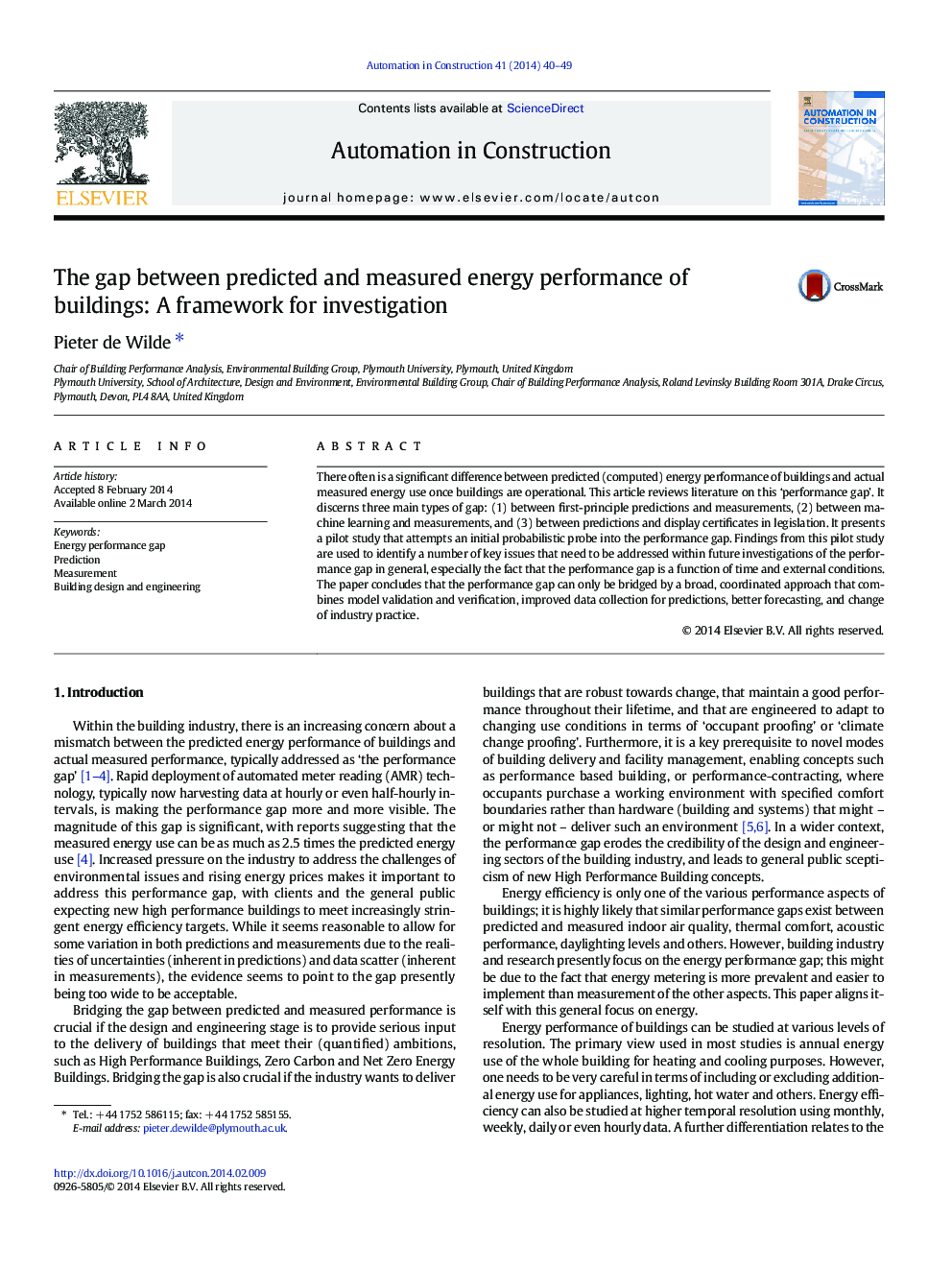| Article ID | Journal | Published Year | Pages | File Type |
|---|---|---|---|---|
| 246493 | Automation in Construction | 2014 | 10 Pages |
•Critical review of the literature on the building energy performance gap•Differentiation between three types of performance gap•Probabilistic probe into the gap between simulated and monitored data•Performance gap changes over time and is dependent on context of observation.
There often is a significant difference between predicted (computed) energy performance of buildings and actual measured energy use once buildings are operational. This article reviews literature on this ‘performance gap’. It discerns three main types of gap: (1) between first-principle predictions and measurements, (2) between machine learning and measurements, and (3) between predictions and display certificates in legislation. It presents a pilot study that attempts an initial probabilistic probe into the performance gap. Findings from this pilot study are used to identify a number of key issues that need to be addressed within future investigations of the performance gap in general, especially the fact that the performance gap is a function of time and external conditions. The paper concludes that the performance gap can only be bridged by a broad, coordinated approach that combines model validation and verification, improved data collection for predictions, better forecasting, and change of industry practice.
